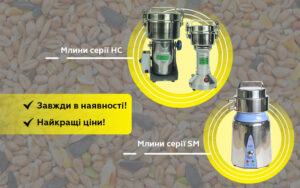North America Hospital Stretchers Market: Growing Demand & Key Trends (2024-2032)
Hospital stretchers are essential equipment for healthcare facilities, used for transporting patients efficiently and safely. The North America hospital stretchers market is rapidly evolving, valued at USD 2.9 billion in 2023, and expected to reach USD 4.6 billion by 2032, growing at a CAGR of 5.37%. The market’s growth is driven by a variety of factors, including the rising demand for advanced and specialized stretchers that cater to the unique needs of patients and healthcare staff. This article will delve into the core trends, market dynamics, and leading competitors within this market.
Why is the Hospital Stretchers Market Growing in North America?
1. Aging Population & Healthcare Demand
- North America has an increasingly aging population, with the U.S. and Canada both seeing significant growth in people aged 65 and older. This demographic trend is boosting the demand for healthcare services, including equipment like hospital stretchers designed for elderly patients who may have mobility challenges.
- Elderly patients often require additional care features in stretchers, such as pressure-relief surfaces, enhanced mobility, and greater comfort. This has encouraged manufacturers to innovate and develop more versatile products.
2. Rising Emergency Department (ED) Visits
- Emergency department visits are increasing across North America due to various factors, including the prevalence of chronic diseases, accidents, and trauma cases. Stretchers that allow for quick patient transfers and specialized features (e.g., radiographic capabilities) are crucial for emergency departments.
- In addition, the demand for bariatric stretchers is rising, catering to the growing need for specialized equipment capable of handling heavier patients.
3. Advancements in Healthcare Infrastructure
- Investments in healthcare infrastructure across North America are contributing to the market’s expansion. Hospitals and medical facilities are increasingly seeking technologically advanced, durable, and easy-to-use stretchers to meet their operational needs.
- Facilities are investing in state-of-the-art emergency response systems, which often include motorized or electric stretchers to help reduce strain on healthcare workers and improve patient handling.
Key Market Trends in Hospital Stretchers
1. Smart & Connected Stretchers
- A major trend in the market is the integration of Internet of Things (IoT) technology into stretchers, enabling real-time data collection and monitoring. For example, stretchers equipped with sensors can track vital signs, send alerts, and streamline patient data transfer directly to healthcare systems.
- These smart stretchers support efficient workflow in hospitals by reducing the need for manual data entry, thus minimizing errors and optimizing patient care.
2. Motorized & Electric Stretchers
- Motorized stretchers are becoming increasingly popular as they allow for smoother patient transfers and reduce the physical strain on healthcare workers. Electric mechanisms enable healthcare staff to adjust stretcher height, recline positions, and overall mobility with minimal effort.
- Many motorized stretchers come with battery backup features, ensuring they remain operational during power outages or in emergency situations.
3. Ergonomic and Adjustable Designs
- The ergonomic designs of modern stretchers cater to both patient comfort and the ease of healthcare providers. Adjustable-height stretchers, for instance, allow the stretcher to be positioned at a level that’s most convenient for the provider, reducing physical strain during patient transfers.
- Additionally, bariatric stretchers—designed to support higher weight capacities—are becoming standard in hospitals, responding to the need for equipment that can safely handle bariatric patients.
4. Emphasis on Sustainability and Durability
- There is a growing emphasis on sustainable healthcare practices, prompting manufacturers to incorporate eco-friendly materials into stretcher designs. These materials are durable and easy to clean, helping healthcare facilities adhere to stringent hygiene standards.
- Stretchers designed with longevity in mind also help facilities reduce equipment replacement costs and enhance overall sustainability by using fewer disposable parts.
Market Segmentation & Key Applications
1. Product Types:
- Fixed-height stretchers: Ideal for routine patient transport, primarily in hospital settings where budget constraints are a consideration.
- Adjustable-height stretchers: Offer flexibility in patient positioning, catering to both patient comfort and caregiver ergonomics.
- Radiographic stretchers: Include X-ray capabilities, allowing for imaging procedures without moving the patient.
- Bariatric stretchers: Designed to handle heavier patients, featuring reinforced frames and wider platforms.
2. End-User Applications:
- Hospitals: The largest end-users, utilizing various stretcher types across departments, including the ED, ICU, and surgical suites.
- Ambulatory Surgical Centers (ASCs): Require specialized stretchers to transport patients before and after procedures.
- Emergency Services: Use advanced, motorized stretchers for patient transportation, particularly in high-pressure, urgent care scenarios.
Top Competitors in the North America Hospital Stretchers Market
1. Stryker Corporation
- Known for a broad range of medical equipment, Stryker offers hospital stretchers with features like high maneuverability, integrated scales, and customizable options. They have a strong focus on innovation, as seen in their latest motorized stretchers designed to improve patient transport efficiency.
2. Carl Bennet AB (Arjohuntleigh AB)
- Arjohuntleigh specializes in healthcare equipment for elderly and mobility-impaired patients. Their stretchers often incorporate ergonomic designs, providing comfort and safety for extended periods.
3. Invacare Corporation
- Invacare is recognized for its durable and reliable medical stretchers that emphasize patient comfort and ease of movement. They are known for their budget-friendly yet high-quality product lines.
4. Paramount Bed Holdings Co., Ltd.
- Paramount Bed Holdings focuses on advanced hospital bed solutions, including stretchers that are motorized and offer pressure-relief surfaces. They are notable for their use of high-tech materials and attention to detail in product design.
5. Joerns Healthcare LLC
- Joerns Healthcare provides a variety of stretchers with innovative designs. They prioritize safety and convenience, often incorporating features such as antimicrobial coatings and adjustable height settings.
Future Outlook for the North America Hospital Stretchers Market
Looking ahead, the North America hospital stretchers market is set for steady growth, with rising investments in healthcare infrastructure and a strong focus on patient-centered care driving demand. The future is likely to see more emphasis on smart technologies and sustainability, with stretchers becoming increasingly sophisticated and environmentally conscious.
The expected growth will continue to attract investments, partnerships, and new players to the market, fostering a competitive landscape. Companies are expected to enhance their R&D capabilities, aiming to deliver innovations that address the unique needs of healthcare facilities in North America.











Post Comment